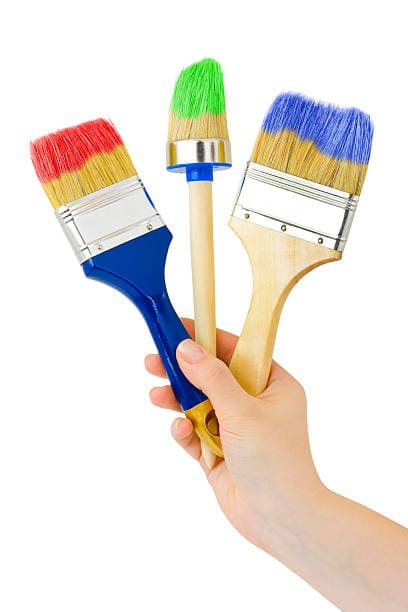Choosing the best paint brushes for trim is essential to any painting project. A good brush can make your trim look cleaner, more professional and last longer. But how do you choose one?
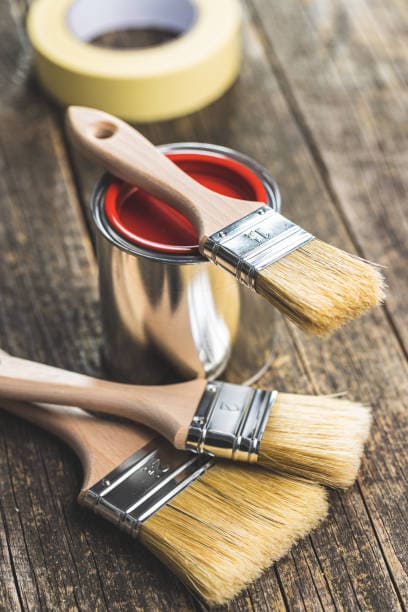
There are many types of paints and finishes. Some require different brushes than others. For example, if you’re painting a smooth surface, it’s essential to use a brush that won’t leave visible brushstrokes behind. On the other hand, if you’re painting a textured surface like brick or stucco, you’ll want a brush that can get into crevices and grooves to get a smooth finish.
Choosing the right length of bristle for your painting project is also essential. Longer bristles are best suited for larger surfaces, while shorter bristles are better suited for smaller surfaces where there is less room between them and the surface they’re applied.
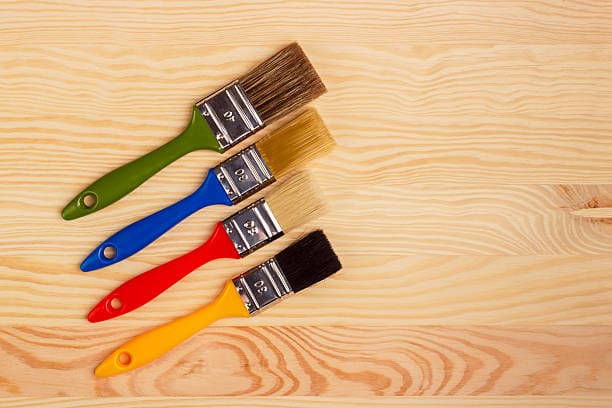
Additionally, there are many materials available when choosing paint brushes for trim, such as nylon (which is more durable), natural bristles (which are softer on delicate surfaces), synthetic bristles (which don’t flake off as easily) and more!
What to Consider When Choosing the Best Paint Brush for Trim
Painting trim can be a lot of work, but it’s also one of the most satisfying parts of home improvement projects. Whether an artist, DIYer, or contractor, paintbrushes can help you achieve the look you want on your trim.
What are paintbrushes made of? A paintbrush features four main parts:
The bristles, also known as the sash; the ferrule, which is the metal piece that connects the bristles to the handle; the crimp, which is the riveted section that tightens the ferrule around the handle; and the handle. When choosing a paintbrush for trim work, it’s essential to consider all four parts carefully.
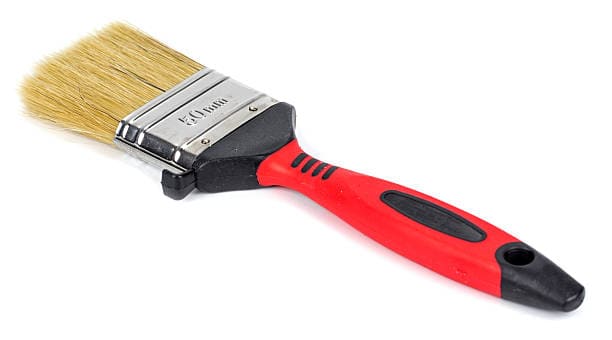
The handle should be made from wood or acrylic and come in various shapes. It should be comfortable to hold and easy to manoeuvre.
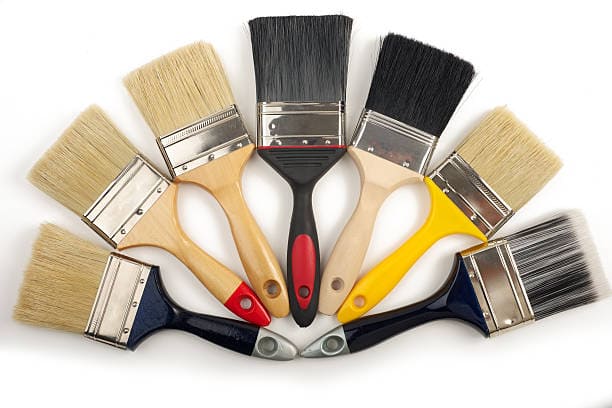
The bristle shape should be chosen based on what kind of trim work you’ll be doing—for example, if you’re painting moulding with rounded corners (called ogee), soft bristles may be best because they won’t damage delicate surfaces like hard-cornered corners might do. The material used for bristles should also be considered—synthetic fibre bristles are often recommended for delicate surfaces.
Size
If you use paintbrushes regularly, investing in some good ones makes sense. Paint Brushes come in all shapes and sizes, so it can be hard to know which will work best for you. Here are some pointers
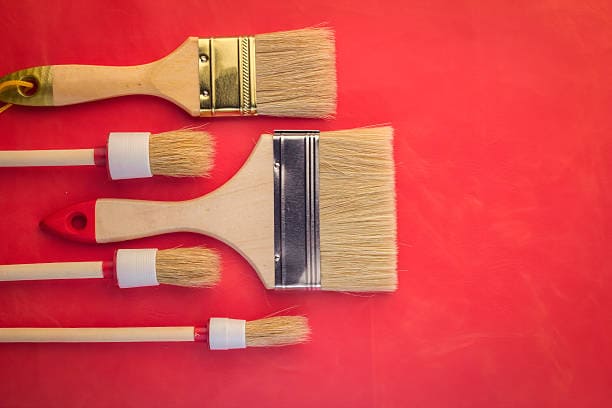
–House-painting-size
brushes fall between 1 and 6 inches in width. As a general rule of thumb, tighter spaces benefit from smaller brush widths, while larger brushes get projects done faster because they can hold and apply more paint on a single pass.
–Within that size range,
trim brush sizes range between 1 and 2½ inches wide because they are designed for tighter spaces. Although 1 to 2½ inches may seem small, it’s’ much easier to add time to the application process than to remove excess paint slathered on by a more comprehensive than necessary brush.
–The length of the sash
on the other hand, it isn’t that important. However, the handle length can affect the brushes’ ergonomics, so when considering how comfortable a brush is to use, keep handle length in mind.
Brushes Shape & Styles
Trim brushes come in many shapes and sizes, but they all serve the same purpose: to allow you to get into corners and edges while applying paint.

Trim brushes are almost always flat, angled brushes (as opposed to round), and they vary widely in terms of bristle shape. There are three main categories of shapes to choose from: chisel, angled, and square.
Chisel trim paint brushes
feature slanted bristles that are ideal for crisp, straight lines. Chisel brushes are often used by professionals in corners and along edges.
Angled trim paintbrushes
These bristles are cut at a slant, allowing the user to get clean, controlled lines. Angled trim paint brushes are handy for narrow areas.

Square trim paint brushes
These are pretty common and are used to apply paint over flat surfaces. However, while square-cut brushes are more efficient, they’re not as controllable or precise as their chisel and angled counterparts.
Bristles Materials
So you’re looking for a paintbrush for your painting job. You’ve got two options: natural or synthetic. What’s the difference, and which should you choose?
Natural bristles are made from the hair of animals such as hogs, badgers, sables, and horses. Synthetic bristles are made from polyester or a blend of nylon and polyester and tend to be cheaper.
Natural bristles, like your own hair, feature tiny splits throughout the fibre, allowing them to hold more paint and apply a smoother finish. However, these splits are also why a natural-bristle paint brush shouldn’t be used with water-based paint—it will absorb too much of it and apply it unevenly.
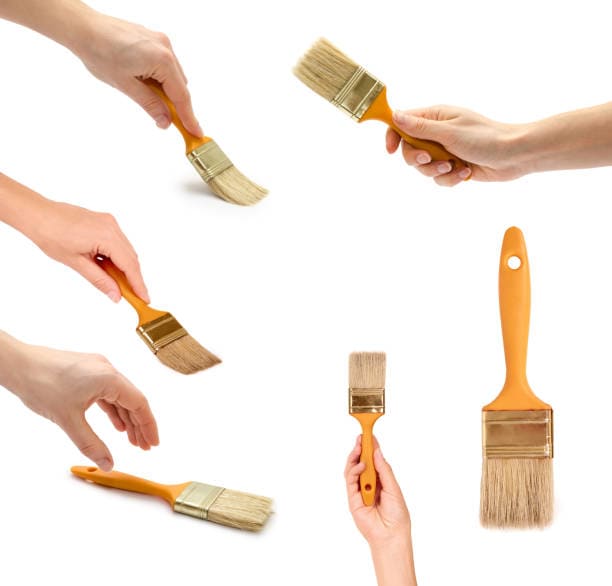
Natural-bristle brushes are best used for oil-based paints and traditional wood finishes, such as shellac and polyurethane. Synthetic brushes aren’t’ nearly as absorbent as natural-bristle brushes, which makes them ideal for latex and acrylic-based paints.
So what does this mean for you? If you’re painting with water-based paint or stains (which are water-based), then consider getting synthetic bristles because they won’t absorb much at all! If you’re looking for something that works.
Paintbrusha Painting Tools


If you’re looking for a brush to help you get the perfect trim, look no further. Paintbrusha has a vast selection of brushes with various handles and features that allow you to achieve flawless results every time quickly.
Most brushes come with straight handles, both short and long, to allow you to easily trim and edge baseboards, window, and door trim. You can also come across angled handles for precise cut-ins or flexible handles, which adjust to any angle.
Best Paint Brushes for Trim
Best paint brush for trim and baseboards angle sash
We’ve got your back when you’re looking for the best small brush for your painting project. Our top choice is the Angle sash—with a sash brush tip featuring a nylon and polyester blend bristle construction for working with latex and water-based paints. This brush gives the best results on trim. The 2″ width of the brush is ideal for working in corners and tight spaces, with the thin bristle profile following your lead for accurate linework on primed and unprimed trim. These features and more make it the best brush for trim.
Best paint brush for interior trim: angular trim
We all know that painting trim is the bane of every painter’s existence. It’s tedious, it’s boring, and it’s also just not very fun. But fear not! We have a brush for you.
The sash paintbrush is the best brush for trim. This brush features superior coverage with high levels of accuracy in your linework. The bristles are made from Nylon and Orel polyester materials, suitable for use with latex and oil-based paints, making it the best brush for trim.
We know you don’t want to spend hours on end doing tedious work—and this brush makes things easier. You’ll get superior coverage with high levels of accuracy in your linework when you use this brush!
Best paintbrush for doors – a large paintbrush
If you’re looking to paint door trim, you’ll want a brush that offers the best coverage possible while minimizing streaking and dripping. Look no further than our Large Wide Paintbrush. This brush is made with natural bristles, which means it can be used with oil-based paints, making it perfect for painting door trim.
This sizeable broad brush has an ergonomic plastic handle, allowing for better grip and control of the brush while painting. The long handle also means less work for your wrist when you use this brush on large surfaces like doors—so no more sore wrists after a day of painting!
Best trim brush for latex paint – Flat Trim Paint Brush
If you’re looking for a brush that can handle the tough jobs, this is the one. With its 3″ width, you’ll get good coverage and be able to paint longer sections of trim easily. The synthetic Nylon bristles and angular tip design provide better accuracy in corners and along wall edges.
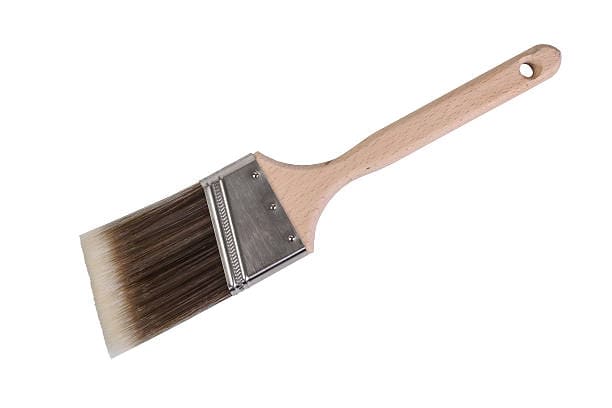
The beavertail hardwood handle fits well in the hands, making it easy to use no matter what you paint. This brush can handle semi-gloss and high-gloss latex paints, giving you a custom “satin-edge” finish with each stroke.
Best paintbrush for window trim
The paintbrush is our top choice for finishing the window trim around the sills and door frames. The tip allows for the ultimate precision line work. It’s’ the ideal brush for cutting in around window and door corners, providing you with an exceptional finish.
This brush comes with polyester bristles for use with water-based and latex paints, and you get an ergonomic soft-grip handle for total control over the brush. This brush offers excellent paint pick-up without dripping, running, or streaking.
You can use this brush with both water-based and latex paints, and it will help you create clean lines that are easy to follow. It’s perfect for edging windowsills and painting door frames!
How to Avoid Brush Strokes When Painting Trim?
Painting trim is a task that many homeowners underestimate. It can seem like the least important part of the job, but it’s’ essential to get right.
When painting your home, every homeowner wants the job to look flawless. However, the reality is that painting is hard work.
It’s’ challenging to get the walls looking right, but the roller takes the most effort. However, it’s’ a different story altogether when it comes to painting or cutting in on the trim.
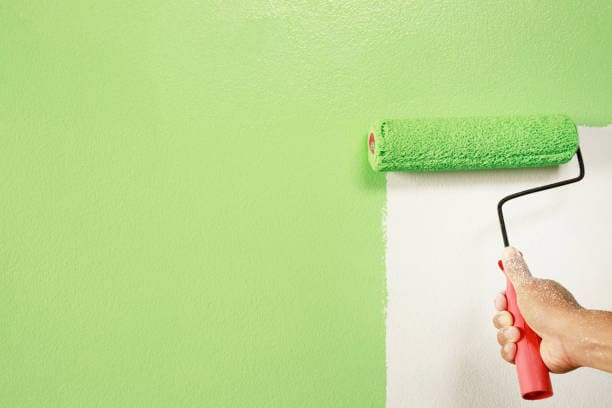
Painting trim is challenging, and it’s’ easy to lose concentration and mess up your work. Using high-quality paint and the right brush goes a long way to creating a professional finish on the trim. The last thing you need is brush strokes showing after it dries.

This brief guide to painting trim gives you some pointers for a masterful finish to the job.
Painting the trim on your house can be a lot of work. You want to ensure it’s done right, but you don’t want to spend ages on it.
Here are some tips for making sure your trim looks excellent:
– Clean your trim before painting. Any dust or debris will interfere with the paint sticking to the wood, so make sure it’s clean before you start.
– Use long, continuous strokes when painting. This will help keep the paint smooth and even, reducing time spent sanding later!
– Use smaller amounts of paint at a time. Dipping your brush in halfway instead of dunking it all the way up helps prevent messes and keeps things manageable—you’ll have more control over where the paint goes and how much of it there is at once.
– Sand down your trim before painting over it again if needed (depending on whether or not you’ve already done this job recently). This will smooth out any rough patches in the wood surface and help prepare it for new layers of paint better than if you just went straight ahead with painting without doing this first step first.

– Use a primer first for best results if possible (especially if this is your first time working on this particular piece of work.
What should I use to paint the trim: brush or roller?
When it comes to painting trim, rollers or brushes?
Painting trim is a lot of work. And if you’re going to do it, you might as well make sure that your work is done right. So how do you know which tool is better for the job?

Rollers deliver a smoother finish and more even paint coating compared to brushes. But a roller is inconvenient for working on small projects or parts (corners, joints, etc.). You also won’t be able to cover the fine details of the trim. Thus, you will have to use both items – a roller for the middle of the trim and a brush for covering the areas rollers cannot reach. IMHO, that’s a lot of work, and using one item (a brush) is more efficient.
Tips for Painting Trim
To keep your trim brushes in good condition, it’s essential to know how to use them and care for them.
- Make sure you never leave any paint on the bristles when using a small brush. This can cause the brush to lose its shape and become ineffective. If you’re having trouble getting all of the paint off before washing, try running it out on a scrap piece of paper or newspaper.
- After use and cleaning, store your trim brushes so they won’t get damaged or ruined by other items. A plastic container is ideal for this purpose, but avoid cardboard boxes because they tend to absorb moisture which may cause rusting or other damage over time.
Happy Painting
Hope this blog can help you achieve excellent painting work.
